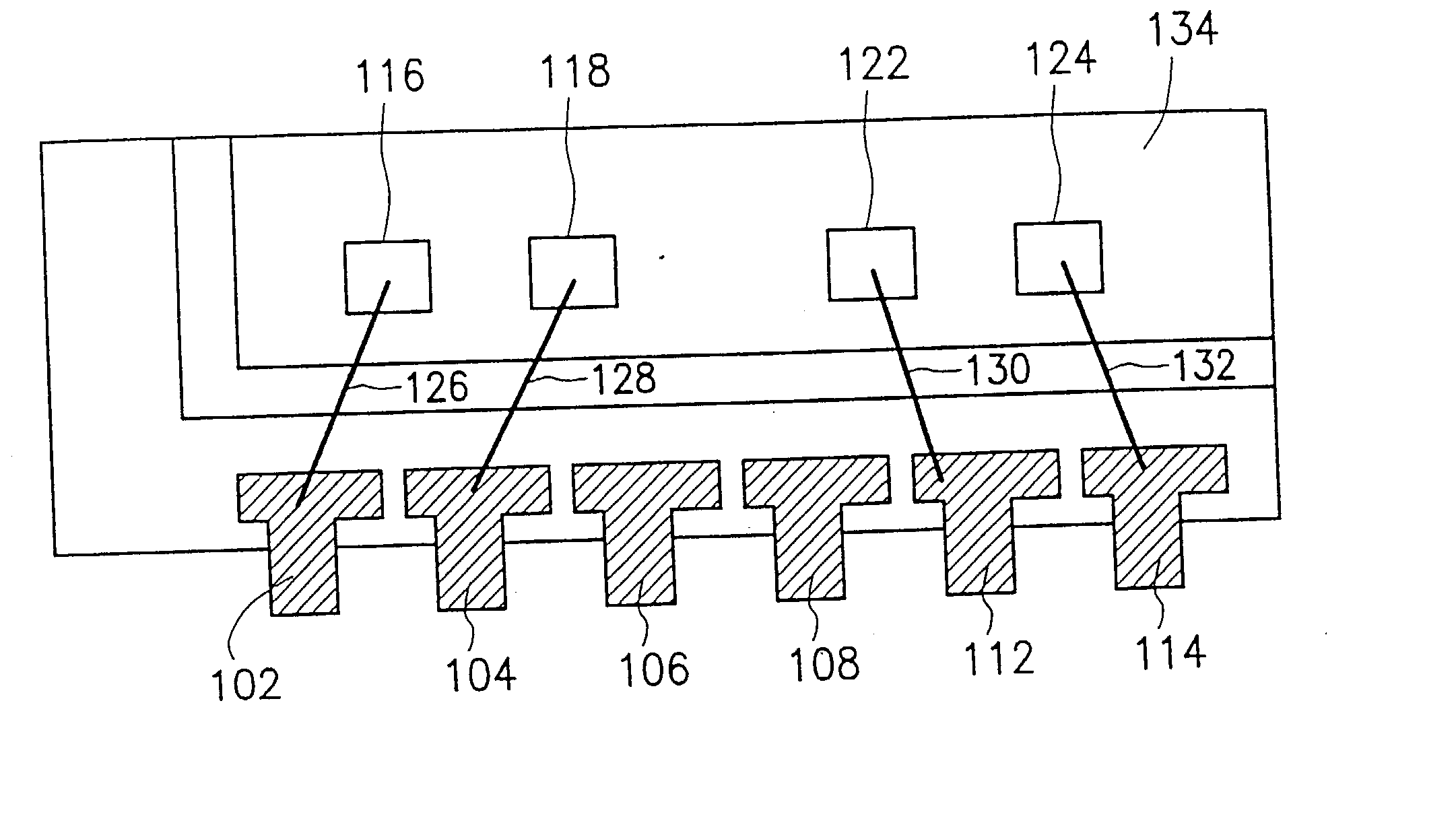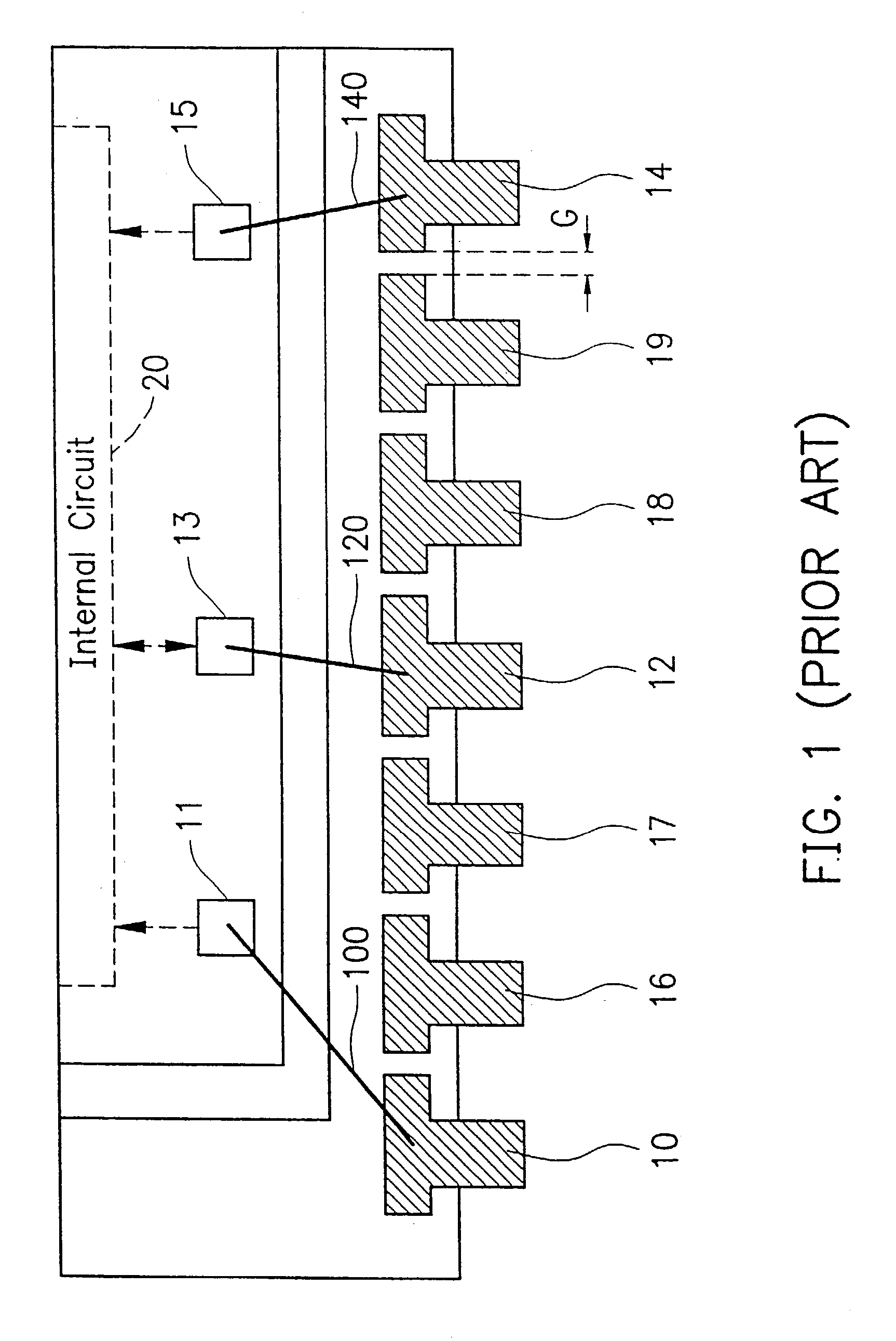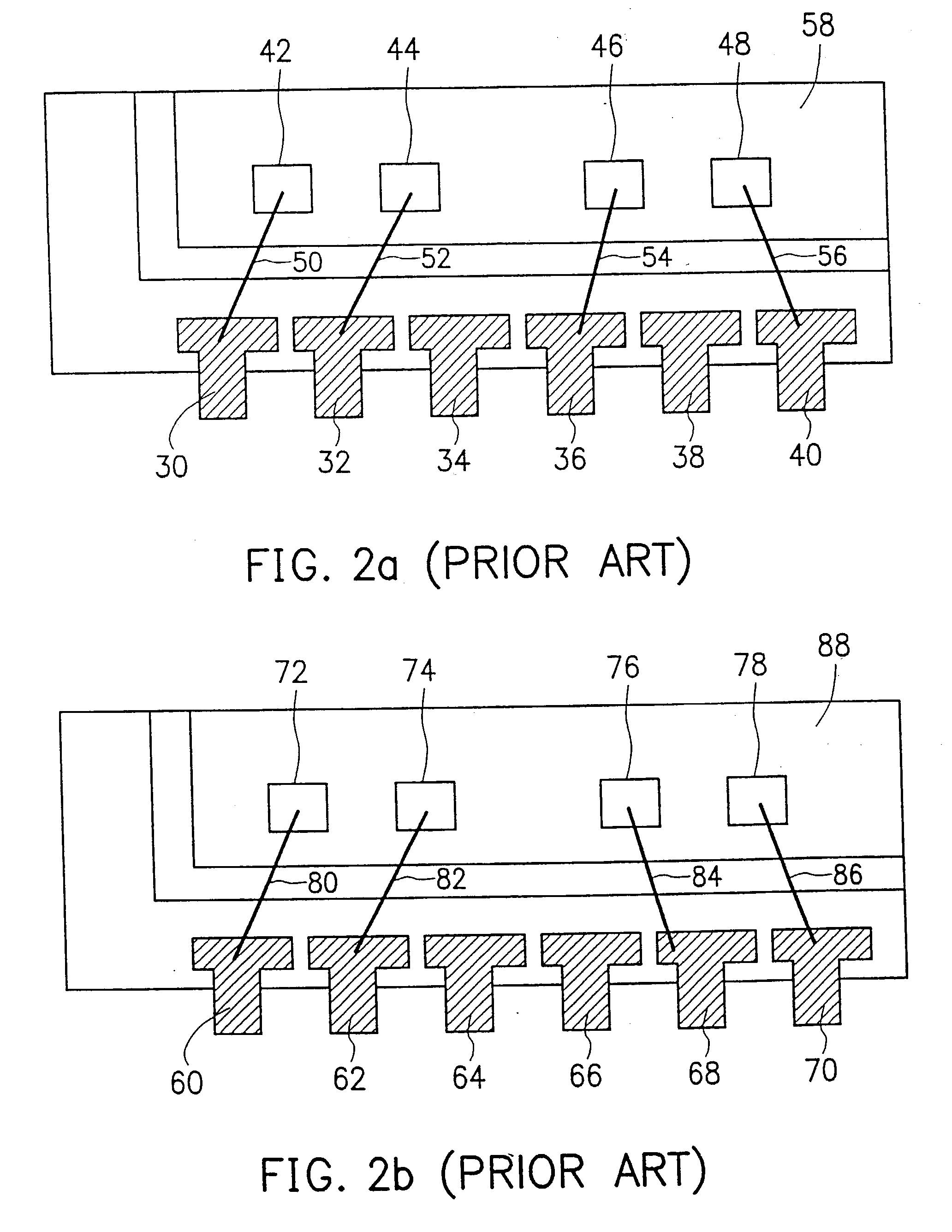Pin-assignment method for integrated circuit packages to increase the electro-static discharge protective capability thereof
a technology of integrated circuits and pin assignments, which is applied in the direction of solid-state devices, electric devices, electrical equipment, etc., can solve the problems of esd damage, ic chip damage, esd damage is particularly common and severe,
- Summary
- Abstract
- Description
- Claims
- Application Information
AI Technical Summary
Problems solved by technology
Method used
Image
Examples
Embodiment Construction
[0024] In accordance with the invention, the pins of an IC package are organized in such a manner that the no-connect pins are set apart into a plurality of groups or at least one group, with each group containing one single no-connect pin or a number of consecutive no-connect pins, and then each of the two pins that bound both sides of each no-connect pin group is assigned to be a power pin, such as a power pin V.sub.DD, a power pin V.sub.SS, or a ground pin GND, for electrically connect to a power bus V.sub.DD, a power bus V.sub.SS, or a ground bus GND of the IC chip. This arrangement is based on the fact that the pins that are connected to a power bus can better withstand the condition of its neighboring no-connect pin being subjected to an ESD stress of 5 kV. Therefore, in this case, the ESD protective circuitry for the power pins needs not be expanded while nonetheless retaining good ESD protective capability. 7File:
[0025] FIG. 3 is a schematic diagram depicting the pin-assignm...
PUM
 Login to View More
Login to View More Abstract
Description
Claims
Application Information
 Login to View More
Login to View More - R&D
- Intellectual Property
- Life Sciences
- Materials
- Tech Scout
- Unparalleled Data Quality
- Higher Quality Content
- 60% Fewer Hallucinations
Browse by: Latest US Patents, China's latest patents, Technical Efficacy Thesaurus, Application Domain, Technology Topic, Popular Technical Reports.
© 2025 PatSnap. All rights reserved.Legal|Privacy policy|Modern Slavery Act Transparency Statement|Sitemap|About US| Contact US: help@patsnap.com



